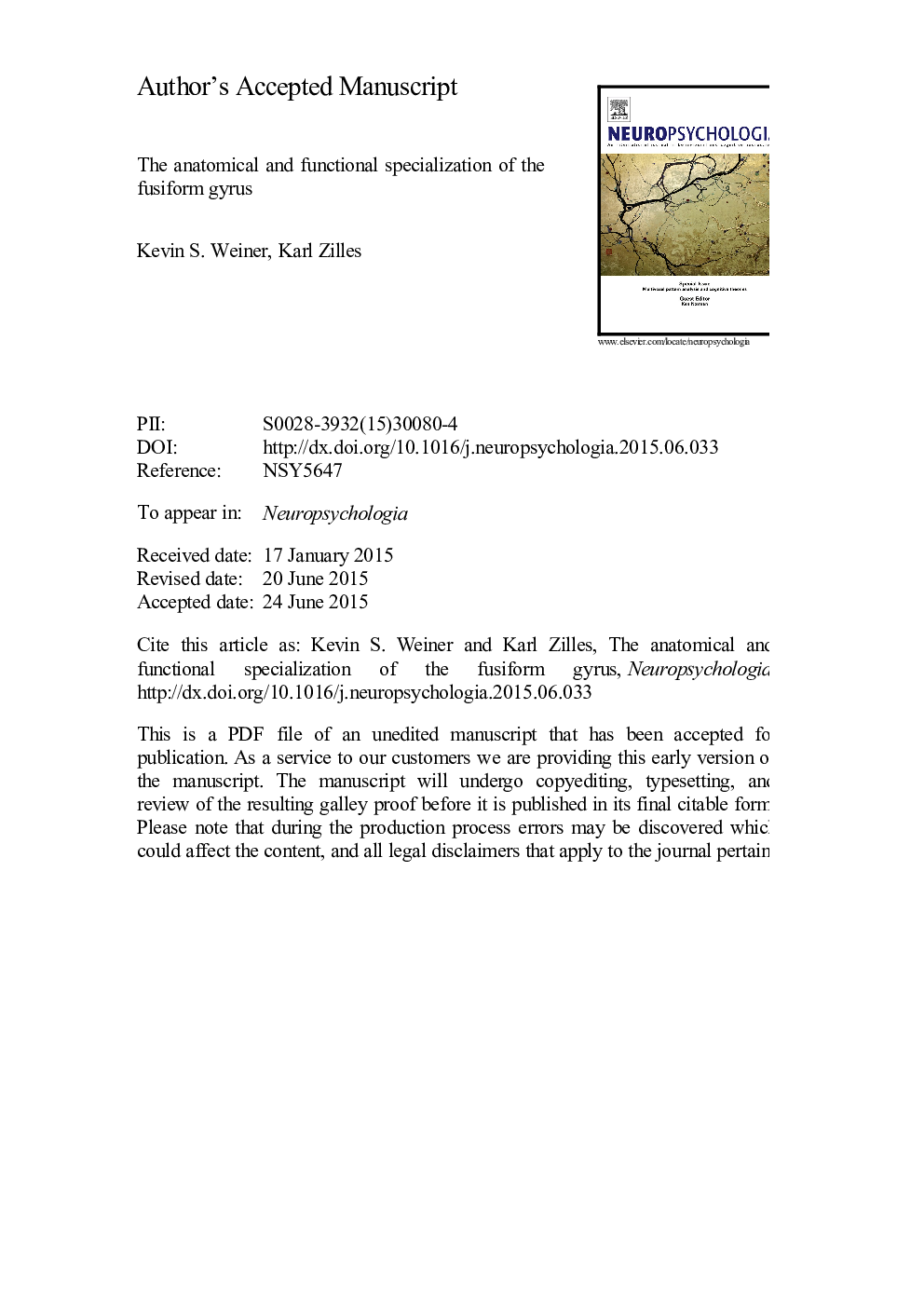| Article ID | Journal | Published Year | Pages | File Type |
|---|---|---|---|---|
| 7319160 | Neuropsychologia | 2016 | 59 Pages |
Abstract
The fusiform gyrus (FG) is commonly included in anatomical atlases and is considered a key structure for functionally-specialized computations of high-level vision such as face perception, object recognition, and reading. However, it is not widely known that the FG has a contentious history. In this review, we first provide a historical analysis of the discovery of the FG and why certain features, such as the mid-fusiform sulcus, were discovered and then forgotten. We then discuss how observer-independent methods for identifying cytoarchitectonical boundaries of the cortex revolutionized our understanding of cytoarchitecture and the correspondence between those boundaries and cortical folding patterns of the FG. We further explain that the co-occurrence between cortical folding patterns and cytoarchitectonical boundaries are more common than classically thought and also, are functionally meaningful especially on the FG and probably in high-level visual cortex more generally. We conclude by proposing a series of alternatives for how the anatomical organization of the FG can accommodate seemingly different theoretical aspects of functional processing, such as domain specificity and perceptual expertise.
Related Topics
Life Sciences
Neuroscience
Behavioral Neuroscience
Authors
Kevin S. Weiner, Karl Zilles,
